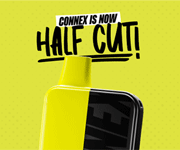You are using an out of date browser. It may not display this or other websites correctly.
You should upgrade or use an alternative browser.
You should upgrade or use an alternative browser.
An alternative view on disposables and harm reduction
zouzounaki
Olympian
- Joined
- Dec 13, 2016
- Messages
- 36,259
The person doing the littering is responsible for any litter they create and they can be recycled at the local tip or elsewhere as small electrical waste.
https://www.recycleyourelectricals....at-electronics-can-be-recycled/recycle-vapes/
aye, consumers who throw things on the ground or dispose of battery devices in bins are partly responsible. but i don’t think it’s only consumers who are responsible. things that we can buy are developed and marketed by manufacturers. in this case i think more of the responsibility lies there.
i also that much of what is sent for recycling actually goes in the landfill anyway, and there is waste produced in the process of recycling batteries. manufacturing single use items with batteries in them is wasteful and irresponsible.
zouzounaki
Olympian
- Joined
- Dec 13, 2016
- Messages
- 36,259
Why bother @Netvaper , he's just trying to get a rise.
no i’m not
WelshBlue
Postman
- Joined
- Sep 27, 2022
- Messages
- 254
My 2pence.
I don't think the onus is really on the manufacturers as such, it's down to the end user to be more responsible.
My car say 160 mph on the clock - if I try to get as close to that as I can and get caught ... it's not the coppers fault who books me, it's me for being a dick
As a society we should be held accountable for our own actions. Or inactions ?
Target the litterers and shady retailers yeah, but not those who use disposables responsibly.
I don't think the onus is really on the manufacturers as such, it's down to the end user to be more responsible.
My car say 160 mph on the clock - if I try to get as close to that as I can and get caught ... it's not the coppers fault who books me, it's me for being a dick
As a society we should be held accountable for our own actions. Or inactions ?
Target the litterers and shady retailers yeah, but not those who use disposables responsibly.
Mutley1
Legend
- Joined
- Jul 30, 2013
- Messages
- 11,309
Up until today I've always hated disposables until I spotted some young lad at the mother in laws funeral today, I was ready to rip into him until he told me he has a condition where his eyesight is rapidly going & will be totally blind in a year & has already got a guide dog, he told me hates smoking & these he don't have to worry about refilling it, so do these have a place well yes under these circumstances I think they do.
andipandi
Legend
- Joined
- May 29, 2015
- Messages
- 20,488
The modern sweet shop has long removed from its window the screw-top glass jars full of gobstoppers and lemon sherbets that used to tempt kids to spend their pocket money on the way home from school. Instead, there is an array of slim boxes in a rainbow of bright colours. “Banana ice”, “pink lemonade”, “blueberry sour raspberry”, “cotton candy ice”, they are labelled.
The jewelled boxes contain Elf bars: disposable e-cigarettes. The rules say they are for adults only. Under-18s are not allowed to buy them, even if they wander in to look at the confectionery that is also for sale in some of these shops. But everyone knows the pretty toys also end up in the hands of children, who may even have learned how to use them from influencers on TikTok.
It’s hugely alarming for the parents of teenage kids who catch a whiff of strawberry in the bedroom. They might in the past not have known that their child was experimenting with a scrounged fag behind the bike sheds after school. Smoking was once so widespread that it would be a rare child who didn’t take a puff at some point, hopefully choking on the fumes and never touching a cigarette again.
Overall, smoking rates in the UK have come down massively: fewer than 15% of adults today say they smoke, down from a peak of more than 45% during the 1970s. This is thanks to the long and hard-fought war on tobacco. But in recent years, many experts in the UK argue that e-cigarettes have played a part in that victory, providing the addict with the nicotine hit without the deadly tar.
Others, especially in the United States, say they are the devil’s handiwork, hooking kids on nicotine, exposing them to harmful chemicals and potentially routeing them back to tobacco in the long term. The eagerness with which the Big Tobacco companies have moved into e-cigarette manufacture, as their markets in rich countries stall, only supports that belief.
The transatlantic schism over vaping and health, sparked by the arrival of the first overtly teen-friendly e-cigarettes from the San Francisco startup Juul, still exists. The US government, through the Food and Drug Administration, and some states, such as California, have been hurling every legal and financial penalty they can find at Juul, whose USB stick-sized e-cigarettes, launched in 2015, have taken off among young people.
There have been stories of high school epidemics, with waves of flavoured vapour emanating from bags in the back row of class. Juul agreed in September to pay $440m to 33 US states following two years of investigations into its marketing practices. The company was accused of deliberately targeting young people with launch parties and social media advertising. At the time, it had already removed fruit and candy flavours from its range.
In the UK, however, the government broadly accepts the advice from Public Health England, now the Office for Health Improvement and Disparities, that vaping is very much less harmful than smoking – famously it said 95% less – and is a useful tool for those who want to quit. The NHS encourages smokers to try vaping instead, wherever it can, though it is handicapped by the absence of a medically licensed e-cigarette.
These health experts want to focus on the large numbers of middle-aged people with a smoking habit that is likely to kill them, many of them in deprived areas of the country. Almost 6 million people in England still smoke. A quarter of all deaths from cancer are smoking-related. In June, Dr Javed Khan, former Barnardo’s head, published a review commissioned by the (then) health secretary, Sajid Javid, into what should be done to make smoking obsolete. His third recommendation was “promote vaping”. More than half – 57% – of adult vapers in the UK are ex-smokers, says campaign group ASH (Action on Smoking and Health).
But the underage kids using disposable vapes from Elf Bar and Geek Bar, made in Shenzhen, China, and available online as well as in the stores, present a distressing problem – because nobody wants kids to get addicted to nicotine – and also a diversion of energy and resources from the vital battle against tobacco. ASH’s data says 83% of 11-17s have never tried an e-cigarette, but this year 7% said they were currently vaping, which is up from 4% in 2020. Recent analysis of data from the US by researchers from San Francisco and Massachusetts general hospital suggests kids first try e-cigarettes on average at the age of 13 and one in 10 of those who vape puff on it just after waking up.
How to solve this? It’s hugely difficult, not helped by entrenched positions on the use and misuse of vapes. What we surely need, though, is a clampdown on the advertising and marketing of e-cigarettes that are attractive to young people. We have cigarettes in plain packages – why not extend that to all nicotine products? Bin the pretty boxes and sweet flavours. We also need the existing rules on sales and marketing to children to be policed. Local authorities have too much to do with too little money. They are too cash-strapped to ensure shops don’t sell to under-18s. It is time, as campaigners such as Action on Smoking and Health and Cancer Research UK have been saying, and Khan recommended to the government, for a windfall tax on the tobacco companies. The polluter must pay.
- Sarah Boseley is the Guardian’s former health editor
vapervince
Achiever
- Joined
- Sep 6, 2022
- Messages
- 2,248
Might it be a good idea to legislate against adding nicotine to disposables?
RAPTOREX
Achiever
- Joined
- Nov 28, 2018
- Messages
- 4,126
Why on earth would anyone vape without nicotine?Might it be a good idea to legislate against adding nicotine to disposables?
RAPTOREX
Achiever
- Joined
- Nov 28, 2018
- Messages
- 4,126
Alcohol is a far more dangerous chemical than nicotine. (And is vastly more damaging, in both health and to the economy. )Let’s ban fruit flavoured spirits, beers and mixers.. And make them sell it in brown boxes? And no more glossy ads, at Christmas, too.View attachment 297765
The modern sweet shop has long removed from its window the screw-top glass jars full of gobstoppers and lemon sherbets that used to tempt kids to spend their pocket money on the way home from school. Instead, there is an array of slim boxes in a rainbow of bright colours. “Banana ice”, “pink lemonade”, “blueberry sour raspberry”, “cotton candy ice”, they are labelled.
The jewelled boxes contain Elf bars: disposable e-cigarettes. The rules say they are for adults only. Under-18s are not allowed to buy them, even if they wander in to look at the confectionery that is also for sale in some of these shops. But everyone knows the pretty toys also end up in the hands of children, who may even have learned how to use them from influencers on TikTok.
It’s hugely alarming for the parents of teenage kids who catch a whiff of strawberry in the bedroom. They might in the past not have known that their child was experimenting with a scrounged fag behind the bike sheds after school. Smoking was once so widespread that it would be a rare child who didn’t take a puff at some point, hopefully choking on the fumes and never touching a cigarette again.
Overall, smoking rates in the UK have come down massively: fewer than 15% of adults today say they smoke, down from a peak of more than 45% during the 1970s. This is thanks to the long and hard-fought war on tobacco. But in recent years, many experts in the UK argue that e-cigarettes have played a part in that victory, providing the addict with the nicotine hit without the deadly tar.
Others, especially in the United States, say they are the devil’s handiwork, hooking kids on nicotine, exposing them to harmful chemicals and potentially routeing them back to tobacco in the long term. The eagerness with which the Big Tobacco companies have moved into e-cigarette manufacture, as their markets in rich countries stall, only supports that belief.
The transatlantic schism over vaping and health, sparked by the arrival of the first overtly teen-friendly e-cigarettes from the San Francisco startup Juul, still exists. The US government, through the Food and Drug Administration, and some states, such as California, have been hurling every legal and financial penalty they can find at Juul, whose USB stick-sized e-cigarettes, launched in 2015, have taken off among young people.
There have been stories of high school epidemics, with waves of flavoured vapour emanating from bags in the back row of class. Juul agreed in September to pay $440m to 33 US states following two years of investigations into its marketing practices. The company was accused of deliberately targeting young people with launch parties and social media advertising. At the time, it had already removed fruit and candy flavours from its range.
In the UK, however, the government broadly accepts the advice from Public Health England, now the Office for Health Improvement and Disparities, that vaping is very much less harmful than smoking – famously it said 95% less – and is a useful tool for those who want to quit. The NHS encourages smokers to try vaping instead, wherever it can, though it is handicapped by the absence of a medically licensed e-cigarette.
These health experts want to focus on the large numbers of middle-aged people with a smoking habit that is likely to kill them, many of them in deprived areas of the country. Almost 6 million people in England still smoke. A quarter of all deaths from cancer are smoking-related. In June, Dr Javed Khan, former Barnardo’s head, published a review commissioned by the (then) health secretary, Sajid Javid, into what should be done to make smoking obsolete. His third recommendation was “promote vaping”. More than half – 57% – of adult vapers in the UK are ex-smokers, says campaign group ASH (Action on Smoking and Health).
But the underage kids using disposable vapes from Elf Bar and Geek Bar, made in Shenzhen, China, and available online as well as in the stores, present a distressing problem – because nobody wants kids to get addicted to nicotine – and also a diversion of energy and resources from the vital battle against tobacco. ASH’s data says 83% of 11-17s have never tried an e-cigarette, but this year 7% said they were currently vaping, which is up from 4% in 2020. Recent analysis of data from the US by researchers from San Francisco and Massachusetts general hospital suggests kids first try e-cigarettes on average at the age of 13 and one in 10 of those who vape puff on it just after waking up.
How to solve this? It’s hugely difficult, not helped by entrenched positions on the use and misuse of vapes. What we surely need, though, is a clampdown on the advertising and marketing of e-cigarettes that are attractive to young people. We have cigarettes in plain packages – why not extend that to all nicotine products? Bin the pretty boxes and sweet flavours. We also need the existing rules on sales and marketing to children to be policed. Local authorities have too much to do with too little money. They are too cash-strapped to ensure shops don’t sell to under-18s. It is time, as campaigners such as Action on Smoking and Health and Cancer Research UK have been saying, and Khan recommended to the government, for a windfall tax on the tobacco companies. The polluter must pay.
https://www.theguardian.com/commentisfree/2022/nov/10/vaping-britain-teens-smoking-government
- Sarah Boseley is the Guardian’s former health editor
Similar threads
- Replies
- 2
- Views
- 2K
- Replies
- 1
- Views
- 971
- Replies
- 0
- Views
- 845














